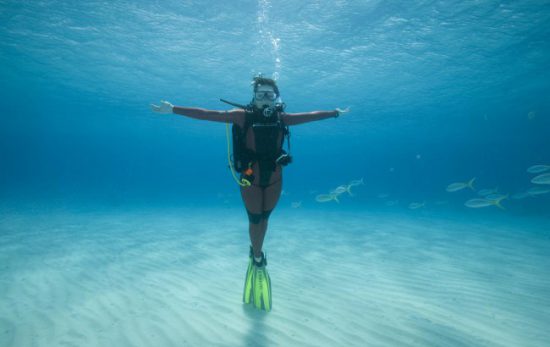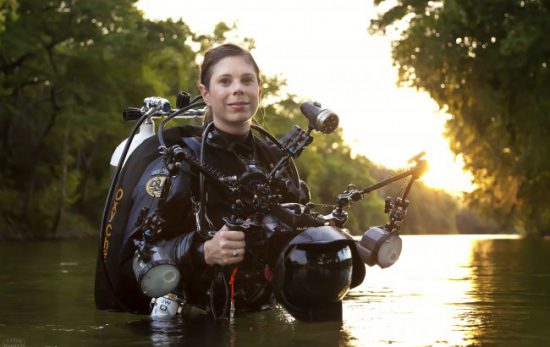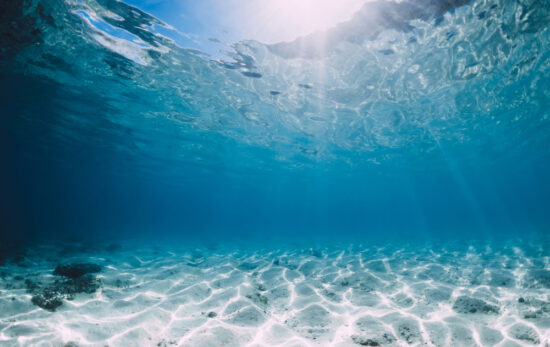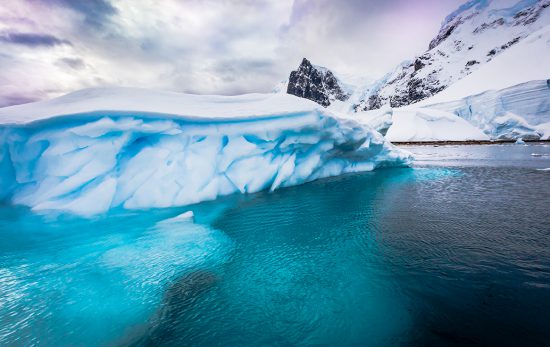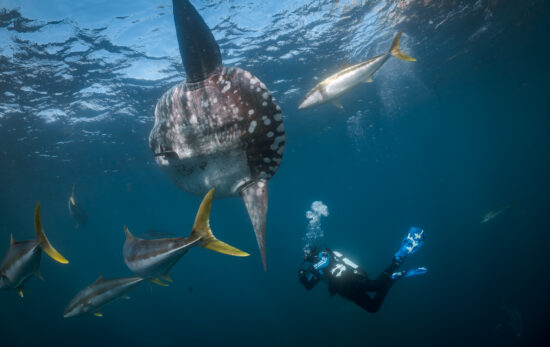Does your scuba diving season end when your local dive sites freeze in the winter? Well, knowing how to ice dive means it doesn’t have to! Ice diving can extend your diving season while delivering a rewarding challenge at the same time. This unique scuba diving discipline can offer crystal-clear visibility and breathtaking underwater landscapes, complete with upside-down ice formations — a dream environment for videographers and photographers.
So what does ice diving and the PADI Ice Diver course involve?
Here are a few things you’ll need to consider if you want to take the frozen plunge and become a PADI-certified ice diver.
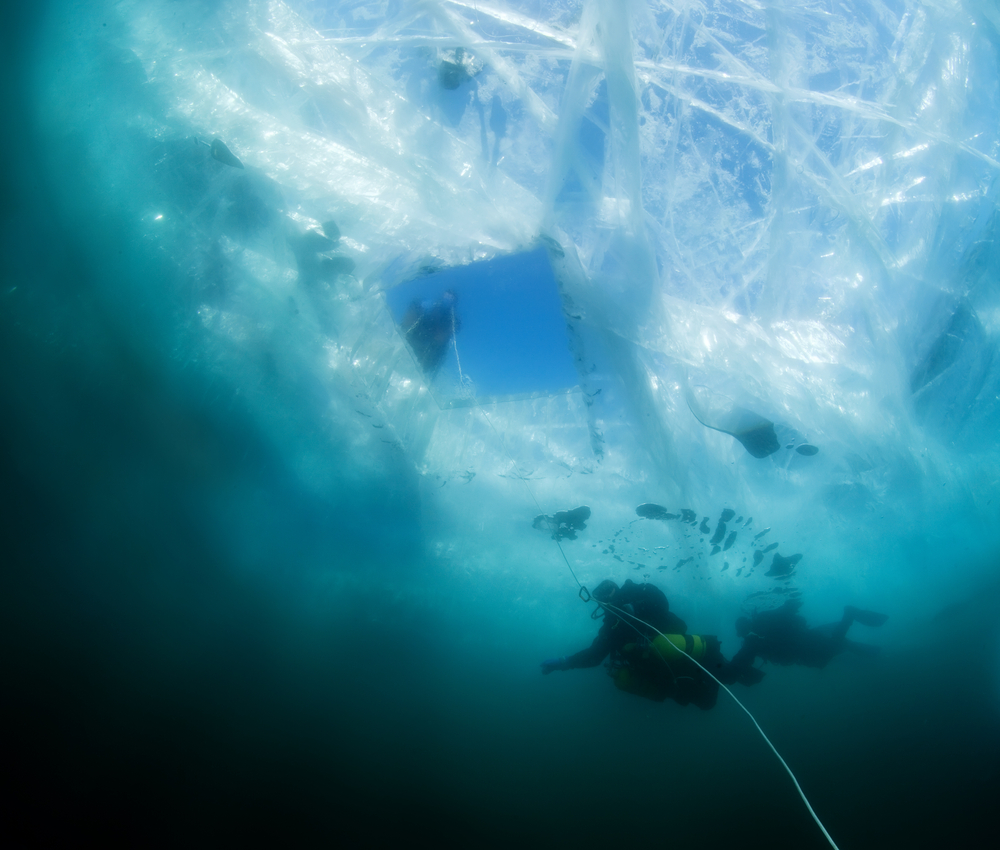
Do You Meet the Prerequisites for the PADI Ice Diver Course?
The first question to ask is whether you meet the prerequisites for the course. In order to complete the Ice Diver course, you will need to be:
- PADI Advanced Open Water certified
- At least 18 years old
If you meet these requirements, you’re ready to sign up to the PADI Ice Diver course. Keep reading to discover some of the key things you’ll need as you become a certified ice diver and start diving in ice.
Appropriate Exposure Protection
To dive in these freezing temperatures and extreme environments, you’re going to want to be familiar with diving in a drysuit.
The PADI Dry Suit Diver Specialty is a great way to do this. The course will teach you about the differences between dry suits and wet suits. This includes things like the fact you’ll be completely dry inside a dry suit (hence the name!). The diving experience you’ll gain in a drysuit before you start ice diving is also invaluable as it will give you one less thing to think about when you take to the ice.
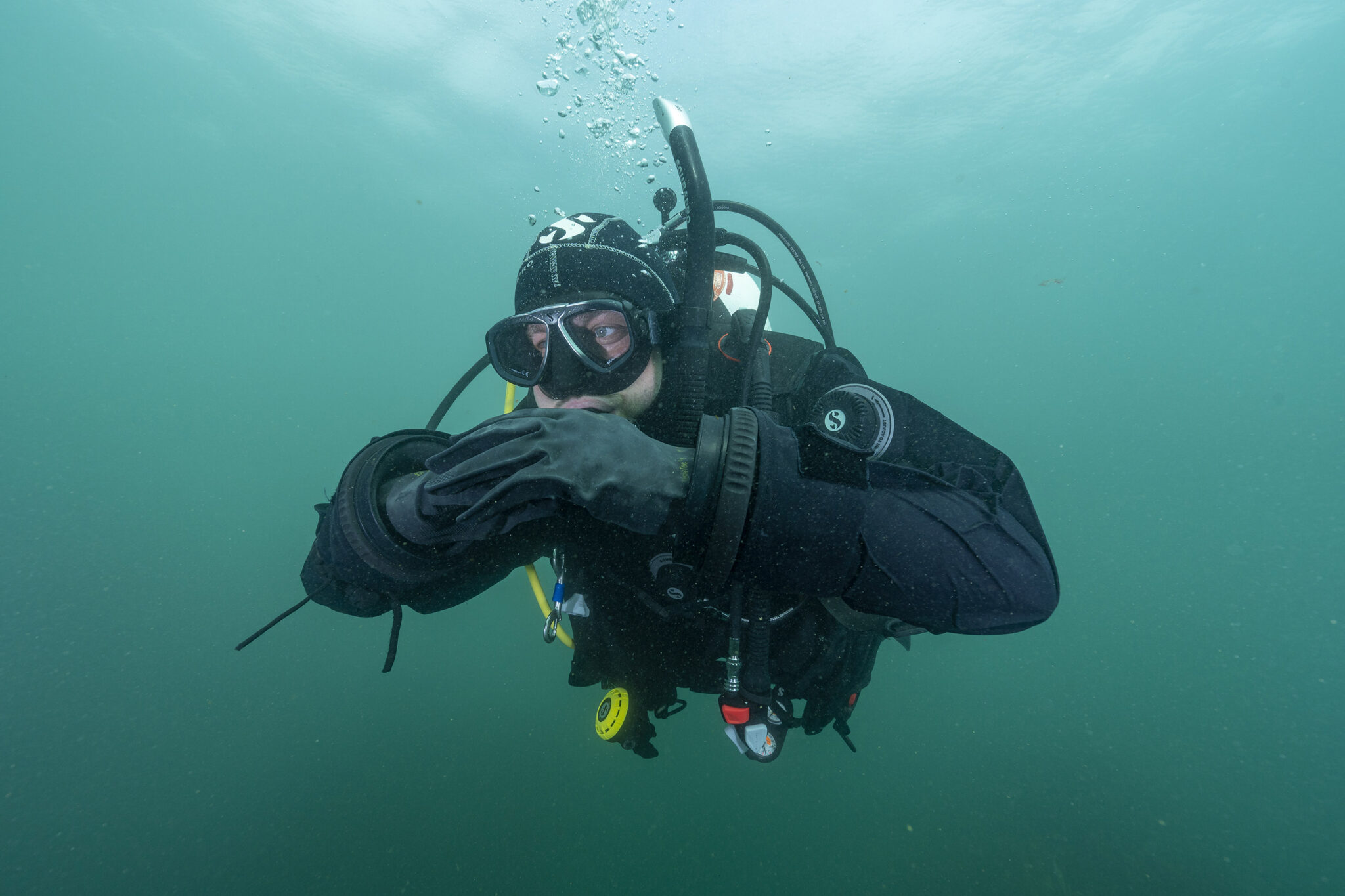
Additionally, a hood, a pair of boots, and a pair of gloves or mitts are also essential ice diving equipment. You’ll definitely appreciate any experience you have with dry gloves on an ice dive.
Another important element when ice diving is protecting your regulator from the cold water temperature and extreme environment. This means regularly taking ice diving regulators into a dive shop for servicing. And in some cases having it environmentally sealed (a dry-sealed first stage) by installing an environmental kit. This important step will help prevent your regulator from freezing and ensures it’s prepared for the freezing conditions.
*As a side note, be sure you allow enough time in your schedule for taking these important steps.
Extra Weight and Gear Tidiness
When you start diving with a drysuit, you will learn that you need additional weight to counterbalance the extra buoyancy of the drysuit. This additional balancing act, alongside the freezing conditions, makes buoyancy control especially important for ice diving, for both safety and your enjoyment.
When you’re diving in ice, you’ll also need to be even more aware of keeping your gear tidy in this unique underwater environment. This includes securely taping loose fin straps out the way and tethering any dangling hoses in place.
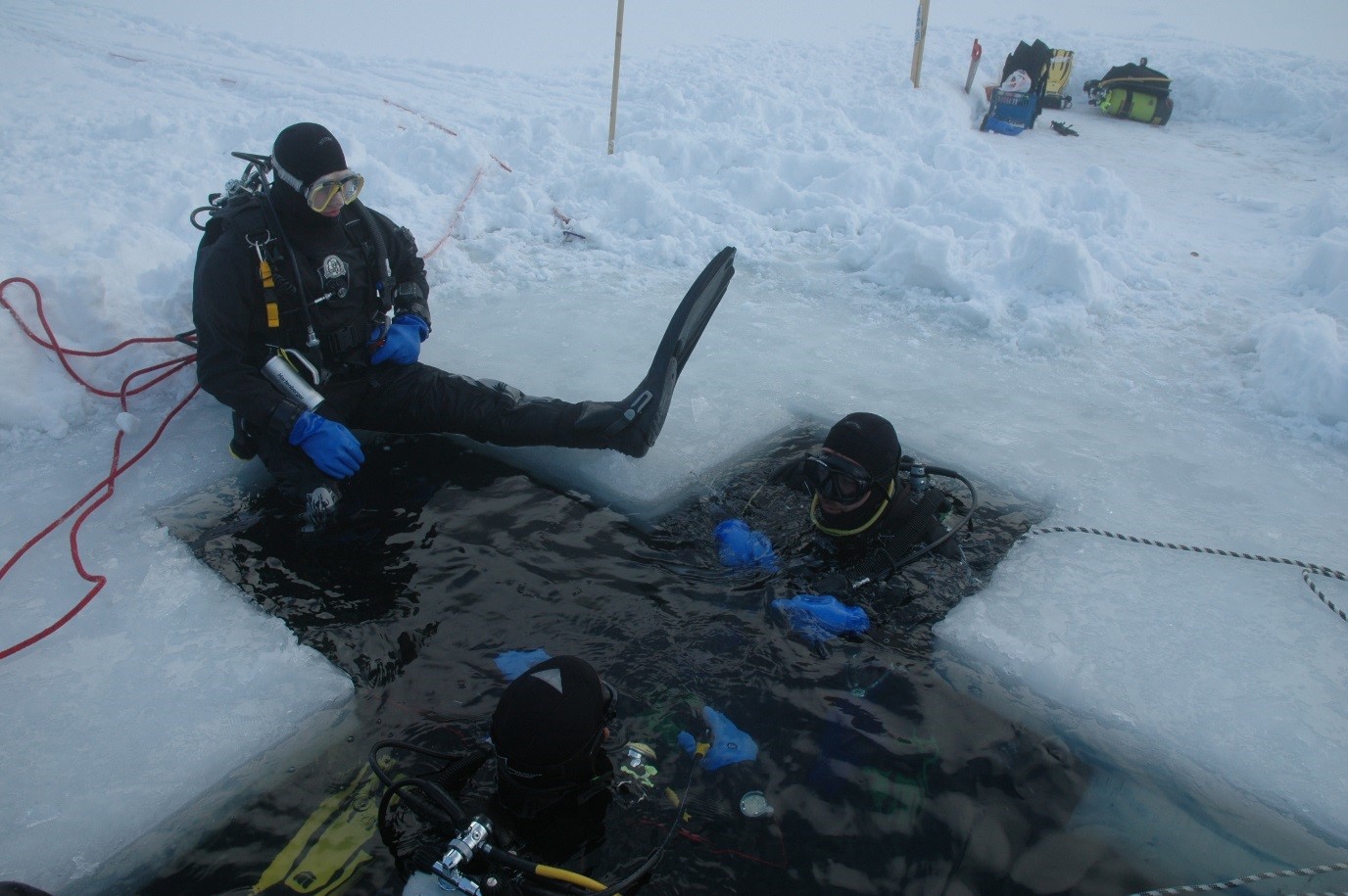
Mental Preparation for Diving in an Overhead Environment
Just like a wreck dive and a cavern or cave dive, ice diving is considered a penetration dive. Not only does this provide additional physical limitations to the diving environment, it also adds an additional mental challenge to overcome.
In the PADI Ice Diving course, the open water training dives are limited to within 40 meters (130 feet) linear distance from the surface (linear distance includes vertical and horizontal distance). Because an overhead environment means divers are not able to return to the surface in a straight ascent, it’s important to take more care with gas consumption. A diver’s math skills come in handy for making these calculations.
Ice dives also require divers to dive with a safety line or rope. One end of the safety line is attached to something at the surface. The other end is tied to the diver. For obvious reasons, line awareness and avoiding entanglement are both essential skills for ice divers to master.
A Way to Make a Hole in the Ice
There are plenty of things to think about when ice diving. And one of the most unusual, unlike other forms of diving, is that ice diving often requires divers to create their entry point into the water. After clearing the snow sitting on top of the ice using a snow shovel (if present), divers then create a hole in the ice using a chainsaw or ice saw.
And of Course… a Sense of Adventure!
Ice diving is truly a unique experience. It puts you in beautiful and rarely-visited environments. If you’re looking for exciting adventures not every diver experiences, ice diving is the scuba diving discipline for you.

Where Can You Go Ice Diving?
Once you’ve decided you want to scuba dive under ice, the next step is to find somewhere to do it. If you have a local PADI Dive Shop and live close to a water body which freezes over in the winter, learning and honing your ice diving skills locally is definitely a handy option.
Where Are the Best Places for Ice Diving?
Once you’ve become a PADI-certified ice diver, there are some truly unique places to ice dive across the globe. From potentially sharing your dive site with polar bears to some of the best underwater visibility you can find, check out these best places in the world for ice diving to get your inspiration flowing.
Baffin Island, Canada
This may be one of the lesser-dived ice diving destinations, but Baffin Island is definitely one of the best. The few people that do venture to this remote location do so during the month of May, when the conditions are at their most convenient for getting in the water. What really makes this a stand-out destination is the grounded icebergs. Plus, the chance of encountering narwhals, polar bears, bowhead whales, ring seals and other noteworthy wildlife.
Hokkaido, Japan
If combining ice diving with geothermal baths, heated hot tubs and traditional Japanese cuisine sounds appealing, you should consider Hokkaido, Japan. The ice diving season runs from January to March in a remote fishing village that sits on the northernmost coast of the main island. Possible wildlife encounters include spotted seals, Alaskan king crabs, and an abundance of sea eagles.
Antarctica
From late January to March, it’s possible to head under the ice close to the world’s southernmost point. A trip to this unique destination involves a constantly changing landscape, thanks to the glaciers and icebergs, as well as wildlife encounters you can’t find anywhere else — think penguins, leopard seals, and several whale species.
North Pole, Alaska
North Pole, a small Alaskan city, near Fairbanks, offers visitors the opportunity to venture below the ice in a lake located above the treeline, at approximately 1,219 meters (4,000 feet) high. The diving season runs between October and May. Visitors can encounter a wealth of wildlife, including grizzly bears, snowy owls, caribou and arctic foxes.
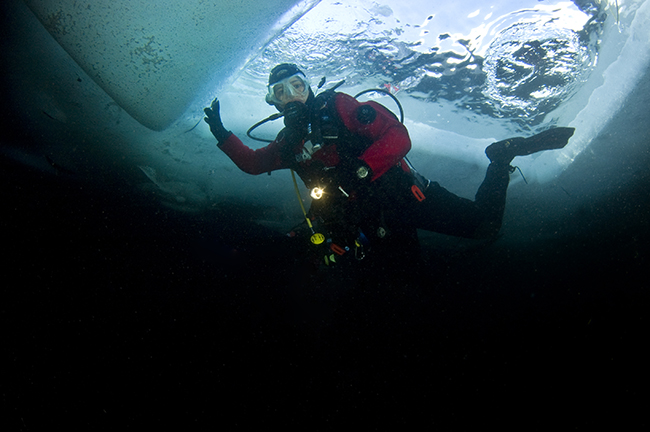
Ready to Become a Certified Ice Diver?
Think you have what it takes to be an ice diver? Then click below to get in contact with your local dive shop to learn more about the PADI Ice Diver Course. Alternatively, get started with the Dry Suit Diver Specialty right now by enrolling in the PADI eLearning online.
